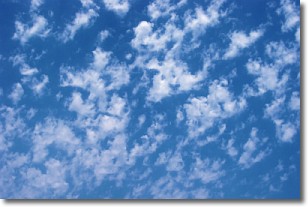Weather Alerts for California
1. Beach Hazards Statement for: Ventura County Beaches; Malibu Coast; Los Angeles County Beaches
2. Extreme Heat Warning for: Coachella Valley; San Diego County Deserts
3. Extreme Heat Warning for: Indian Wells Valley; Mojave Desert Slopes; Mojave Desert
4. Extreme Heat Warning for: San Gorgonio Pass Near Banning
5. Extreme Heat Warning for: Western Antelope Valley Foothills; Eastern Antelope Valley Foothills; Antelope Valley
6. Extreme Heat Warning for: Western Siskiyou County; Central Siskiyou County
7. Heat Advisory for: Cuyama Valley; Santa Ynez Mountains Eastern Range; Santa Barbara County Interior Mountains; Southern Ventura County Mountains; Northern Ventura County Mountains; Interstate 5 Corridor; Western San Gabriel Mountains and Highway 14 Corridor; Eastern San Gabriel Mountains
8. Heat Advisory for: North Central and Southeast Siskiyou County; Northeast Siskiyou and Northwest Modoc Counties; Modoc County; Klamath Basin
9. Heat Advisory for: Northern Humboldt Interior
10. Heat Advisory for: Northern Trinity
11. Heat Advisory for: Riverside County Mountains; San Diego County Mountains
12. Heat Advisory for: San Bernardino and Riverside County Valleys-The Inland Empire
13. Heat Advisory for: San Bernardino County Mountains
14. Heat Advisory for: Santa Ynez Mountains Western Range
15. Heat Advisory for: South Central Siskiyou County
16. Heat Advisory for: Surprise Valley California; Lassen-Eastern Plumas-Eastern Sierra Counties; Mineral and Southern Lyon Counties; Greater Reno-Carson City-Minden Area; Western Nevada Basin and Range including Pyramid Lake; Northern Washoe County
17. Heat Advisory for: West Side Mountains north of 198; Los Banos - Dos Palos; Merced - Madera - Mendota; Planada - Le Grand - Snelling; Coalinga - Avenal; West Side of Fresno and Kings Counties; Caruthers - San Joaquin - Selma; Fresno-Clovis; West Side Mountains South of 198; Buttonwillow - Lost Hills - I5; Delano-Wasco-Shafter; Hanford - Corcoran - Lemoore; Visalia - Porterville - Reedley; Buena Vista; Bakersfield; Southeast San Joaquin Valley; South End San Joaquin Valley; Mariposa Madera Foothills; Fresno-Tulare Foothills; South End Sierra Foothills
18. Wind Advisory for: Santa Barbara County Southwestern Coast
19. Wind Advisory for: Santa Ynez Mountains Western Range
Want more detail? Get the Complete 7 Day and Night Detailed Forecast!
Current U.S. National Radar--Current
The Current National Weather Radar is shown below with a UTC Time (subtract 5 hours from UTC to get Eastern Time).

National Weather Forecast--Current
The Current National Weather Forecast and National Weather Map are shown below.

National Weather Forecast for Tomorrow
Tomorrow National Weather Forecast and Tomorrow National Weather Map are show below.

North America Water Vapor (Moisture)
This map shows recent moisture content over North America. Bright and colored areas show high moisture (ie, clouds); brown indicates very little moisture present; black indicates no moisture.

Weather Topic: What is Evaporation?
Home - Education - Precipitation - Evaporation
 Next Topic: Fog
Next Topic: Fog
Evaporation is the process which returns water from the earth
back to the atmosphere, and is another crucial process in the water cycle.
Evaporation is the transformation of liquid into gas, and it happens because
molecules are excited by the application of energy and turn into vapor.
In order for water to evaporate it has to be on the surface of a body of water.
Next Topic: Fog
Weather Topic: What are Fractus Clouds?
Home - Education - Cloud Types - Fractus Clouds
 Next Topic: Freezing Rain
Next Topic: Freezing Rain
A fractus cloud (scud) is a fragmented, tattered cloud which has
likely been sheared off of another cloud. They are accessory clouds, meaning they
develop from parent clouds, and are named in a way which describes the original
cloud which contained them.
Fractus clouds which have originated from cumulus clouds are referred to as
cumulus fractus, while fractus clouds which have originated from stratus clouds
are referred to as stratus fractus. Under certain conditions a fractus cloud might
merge with another cloud, or develop into a cumulus cloud, but usually a
fractus cloud seen by itself will dissipate rapidly.
They are often observed on the leading and trailing edges of storm clouds,
and are a display of wind activity.
Next Topic: Freezing Rain
Current conditions powered by WeatherAPI.com




